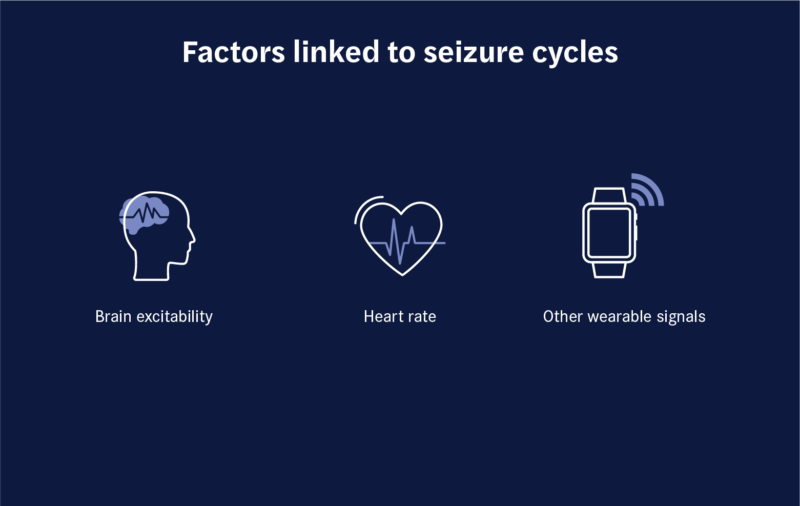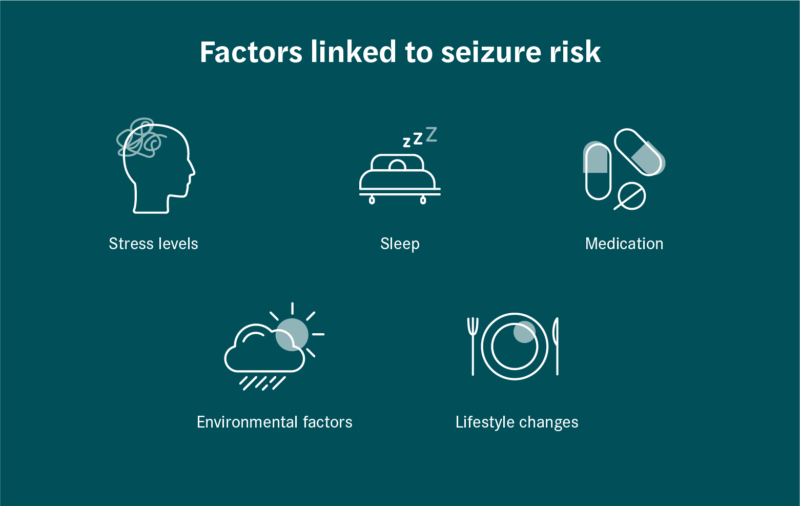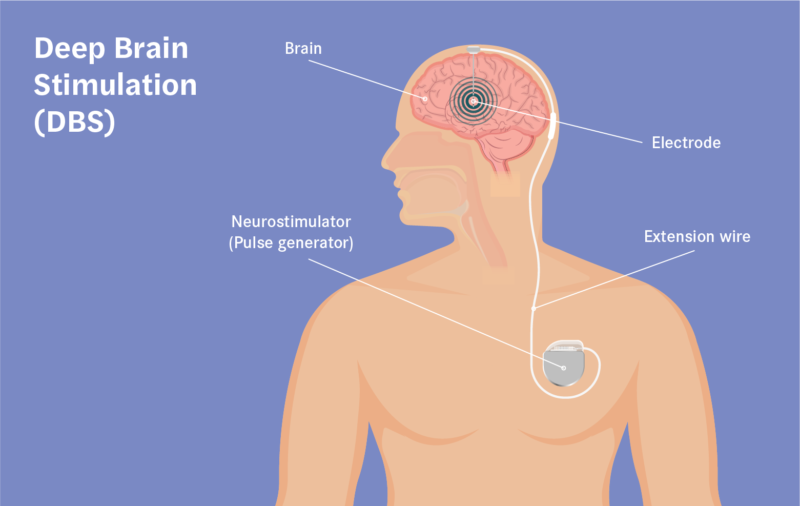There are at least 65 million people in the world currently living with epilepsy. Of those 65 million people, an estimated 15 million are unable to adequately control their seizures with medication. Every day there is the uncertainty of when their next seizure may occur.
Studying seizures has been of interest since ancient times, but it has only been recently in the 21st century that technology has enabled us to record data from the brain for extended periods of time and uncover cyclical patterns in seizure occurrences. Discoveries the research community has made around seizure cycles in the last few years have opened doors to creating solutions for people living with epilepsy with the potential to dramatically change their lives in the very near future.
One of those solutions is the ability to know what their risk of having a seizure at any given time might be. Similar to a weather forecast, a seizure cycle tracker uses historical data to calculate the chance of a seizure occurring.
Let’s take a look at what seizure cycle tracking is, and how it is poised to help people who live with epilepsy gain back control of their lives.

Understanding seizure cycles
Seer’s research shows that people with epilepsy experience patterns or seizure cycles over the course of a day, week, month, and even year. Furthermore, studies show that 80% of people with epilepsy have a daily cycle where they are more prone to seizures at certain times of the day. More than 50% of people experience a seizure cycle spanning over at least a week. Those who experience this longer type of cycle are more prone to experience seizures on specific days of the week or during certain times of the month.
The exact cause of seizure cycles is still unclear and calls for more research, but we know that there are certain factors that are linked.
Linked factors include:
- Brain excitability
- Heart rate
- Other wearable signals
Recognising seizure cycles can be much more difficult than it sounds. Unless you are keeping close track, you may not realise that you have a seizure cycle at all. Identifying cycles is especially challenging for those who experience infrequent seizures, or those who have more than one overlapping cycle.

What is seizure cycle tracking and will it change lives?
Seizure cycle tracking is an innovative concept based on predicting when a person with epilepsy is at the highest (or lowest) likelihood of experiencing an event. The ability to accurately make this forecast can provide a higher level of confidence when going about day-to-day life.
Understanding your seizure risk
Unfortunately, there is no definitive way to know for sure when an event will happen. This leaves people with epilepsy to experience a lot of uncertainty in their lives. Is it safe to take the kids to the park? Will you be able to enjoy a nice evening out with friends or on a date? Knowing how likely (or unlikely) an event occurrence is within a given period of time is something people with drug-resistant epilepsy can now count on for more control over their lives.

Seizure cycle tracking provides a view of the likelihood that a seizure will happen at a given time. Understanding your most vulnerable times of the day, week, or month allows you to better plan activities and to live life to the fullest.
For instance, if seizure cycle tracking reveals a tendency to have events early in the morning, you might choose to make plans later in the day. The same could be true for longer-term plans. Seizure cycle tracking may reveal a seasonal cycle and help you plan bigger life events when the likelihood of experiencing a seizure is lower.
Other potential benefits of seizure cycle tracking include:
- More independence — Having a better idea of when events are most likely to occur means people with epilepsy can scale back on the amount of care they need during low-likelihood times.
- Controlled medication — Many people take anti-seizure medication daily. However, with seizure cycle tracking, it may be possible to work with their doctor to adjust medications at certain times.
How does cycle tracking work?
Seizure cycle tracking does not predict when the next seizure will occur. Rather, it calculates the probability of a seizure occurring at any moment in time based on historical data.
A seizure cycle tracker works in a similar way to a weather forecast. A 50% chance of rain can sometimes end up being no rain at all, and a day of promised sunshine can still turn cloudy and grey. Similarly, a medium or high risk of a seizure occurring based on historical data may not result in a seizure at all.
A recent Seer study identified that certain factors are linked to a person’s risk of a seizure occurring. Changes in these factors can affect seizure risk and thus affect the forecast.
These factors are:
- Level of stress
- Sleep quantity and quality
- Medication adherence
- Environmental factors
- Lifestyle changes

Coordinating therapies
Seizure cycle tracking opens up the opportunity to coordinate with other therapies, such as deep brain stimulation, to the timing of when event risks are the highest. Deep brain stimulation (DBS) involves surgically implanting a device that creates electrical impulses in specific areas of the brain to reduce the severity and frequency of seizures.
Currently, DBS devices work by “set and forget” programming. A neurologist will set parameters and the device constantly stimulates the brain, even when it’s not certain there is a risk of a seizure.

Guided by a seizure cycle tracker, it could be possible to tailor the stimulation to when a seizure is most likely to occur. By doing so, the severity of the event may be decreased or, even better, prevented altogether. Having this ability opens the door to providing people with epilepsy a higher quality of life by providing more effective epilepsy management.
Gain control of your events
The Seer app is already the app of choice for tracking events and managing medications for many people. Download today to start understanding and managing your events.


